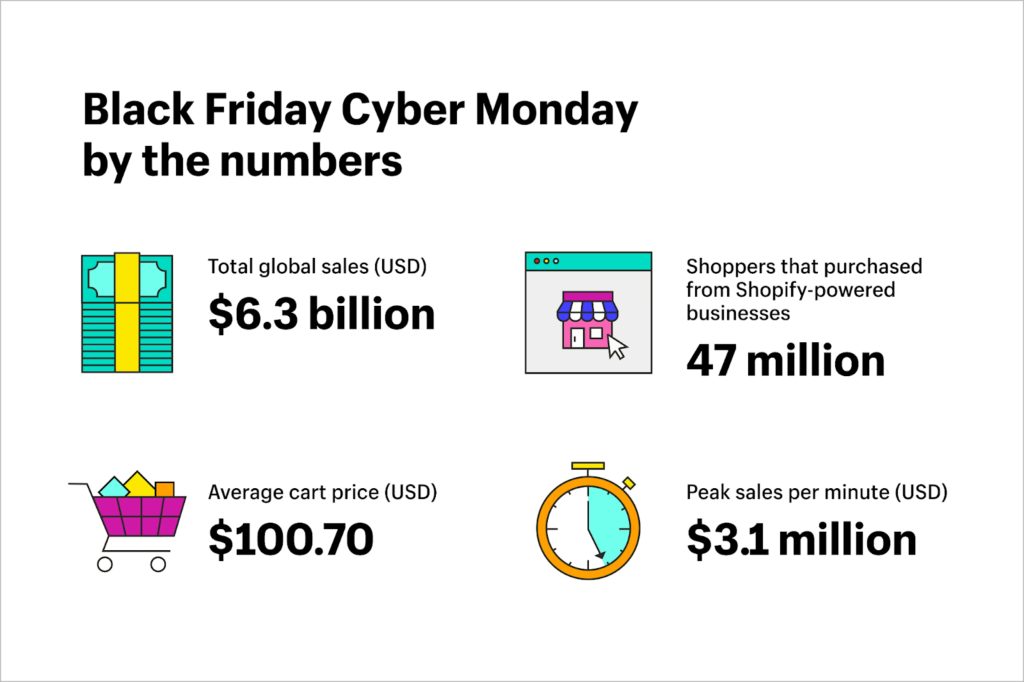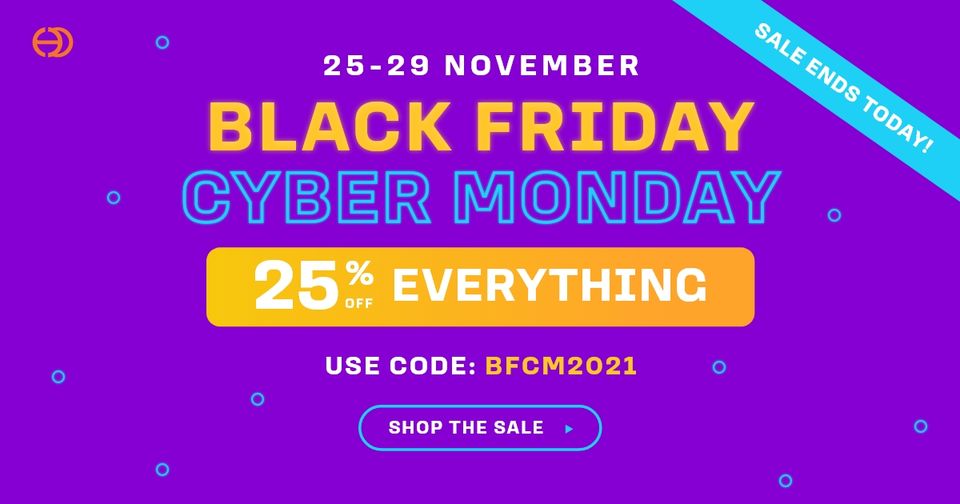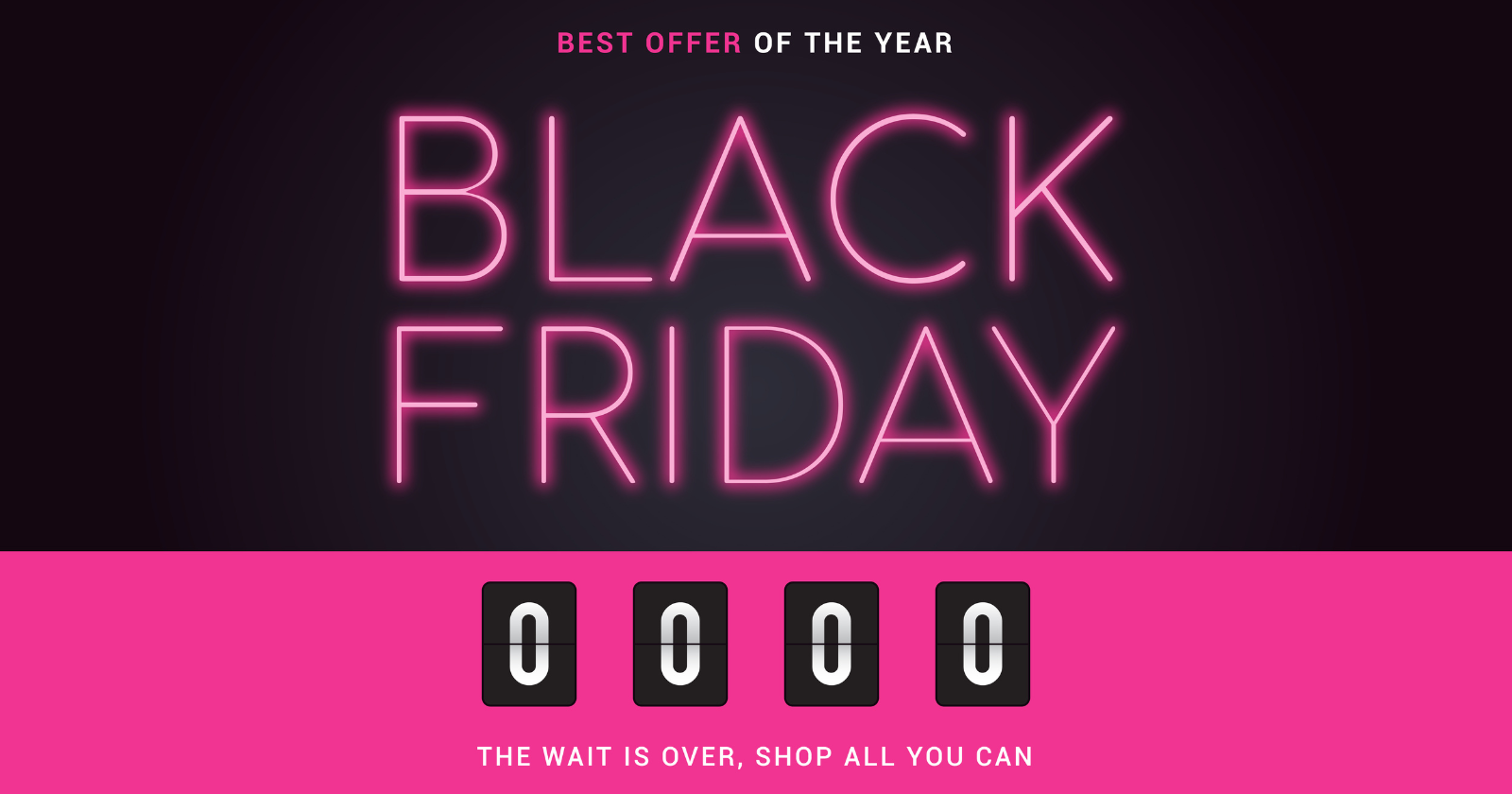Black Friday and Cyber Monday sales are just around the corner.
It’s a bargain hunter’s dream, and dedicated shoppers are already prepping their wallets.
For Shopify stores, it’s the most important time of the year to position your offer right and make the most of the spending spree.
As an ecommerce brand, you’ve been sowing all year. Your brand has pumped iron, studied opposition movements, put hundreds of hours on the field fine-tuning movements, and now you’re ready.
Q4 is the time to reap your harvest. Don’t be shy about it.
In 2021, stores on the Shopify platform generated $6.3 billion in sales.
-
 Image from Shopify, October 2022
Image from Shopify, October 2022
These are not numbers to balk at. It’s not uncommon for some brands to generate more revenue in November than they have all year. Don’t you want your share?
Shoppers are looking for a bargain, and it’s your chance to get your brand in front of them and drive some impressive sales numbers.
Here are some final Black Friday Cyber Monday (BFCM) tips to help skyrocket your sales.
1. Make Your Offer Simple
Don’t make it a complicated math project for customers to work out their discount. Make a clear and simple offer that’s irresistible.
Use automatic discounts rather than requiring customers to enter a coupon code.
Here are the pricing strategies that are most effective:
Flat Percentage Discounts
This is the most common discount offer, and for good reason.
Customers are well-accustomed to, and even expect, this kind of sales offer. It’s predictable and leaves no room for nuance.
-
 Image from Height Dynamics, October 2022
Image from Height Dynamics, October 2022
Flat Dollar Discounts
Some brands may do better to stagger their dollar discounts based on total spend amounts.
The more you spend, the more you save. For example, “Spend $50, Save $10” or “Spend $100, Save $20.”
It can entice customers to spend more in order to save more.
Set A Minimum Order Value To Qualify For Free Delivery
Rather than offering free delivery on every order, which quickly erodes your profit margins, set a minimum order value.
This is a great way to increase your average order value.
It encourages customers to spend just a little bit more to qualify.
Offer A Free Gift With Orders Over A Certain Amount
If you have a low-cost product that complements another product (like shoe polish for leather shoes or an ink refill for a fountain pen), offering a free gift with certain products or minimum order values is a great way to increase conversions.
Sonoran Spice used the offer of a free gift in one of their previous Black Friday sales:
-
 Image from Sonoran Spice, October 2022
Image from Sonoran Spice, October 2022
Buy One, Get One Free Or Half Price
A Buy One, Get One Free (BOGO) offer is a marketing strategy that attracts customers by offering them an incentive to buy two or more items.
The price of the second item is usually discounted or offered free.
Only use this offer for items of equal or lesser value. You do not want to cut into your profit margins on higher-value goods and only offer when inventory levels can be guaranteed.
It’s a great way to move stagnant or out-of-season stock.
2. Create A Landing Page To Attract Email Subscribers
While this tactic is a must for every Shopify store, it works particularly well if you have a large following on your social media channels but are lacking in numbers on your email list.
Email remains one of the most powerful tools to leverage during the BFCM weekend.
You have complete control over the messaging, timing, and who gets to see your emails.
Several weeks before BFCM, create a landing page with an email sign-up form suggesting people subscribe if they want to be notified about your BFCM sales.
Then, share this on your social channels and drive those sign-ups.
Sweeten the offer by offering exclusive offers to email subscribers or access first to sales before the wild rush so they don’t risk missing out when stock levels dwindle.
This will ensure your sale offer lands directly in the lap of those who want to see it.
3. Create A New Sales Collection Targeting Keywords
One handy SEO tip is to keep a generic collection or landing page URL slug that can be reused from year to year.
That is to say, do not use the year in the slug. This will allow you to re-use the collection for each BFCM and capitalize on any hard-earned backlinks you may gain over time.
Over the years, the SEO performance of the page will only compound.
This page can specifically target Black Friday and Cyber Monday keywords for brand and niche-related keywords.
Each year, you can then simply edit and update the collection or page name to coincide with the year.
When the sales period is active, add a nice big sales banner to your homepage and a link from your navigation menu, linking to this collection page.
When BFCM ends, remove the navigation link and take down any homepage banners.
Leave the collection indexed, but remove products from the collection. You can then reuse it for next year.
4. Promote Your Sale To Affiliates
If you have an affiliate program, now is the time to give your loyal affiliate partners the heads-up on your BFCM sales.
It’s a chance for them to cash in on the sales period while promoting your offers.
You can take it one step further and give them exclusive first access to sales. Some VIP treatment never goes astray.
Sweeten the deal by offering an additional commission for hitting sales milestones or prizes for top affiliate sales.
5. Get In First Before The Rush
Consider using the same BFCM strategies but launching your sales early.
The intent behind this is to get in before the rush. It’s a ninja strategy to attract customers waiting in anticipation of the sales.
A preliminary sale also has the benefit of beating the postal rush.
6. Be Bold In Your Messaging
Now for a little pep talk.
Too many brands are passive. They don’t want to announce their sales on their social channels for fear of saturating feeds or being too overbearing.
They don’t want to email their list for fear of annoying people.
They might send out one email announcing the sale, but it comes across as lacking confidence and sounds like, “Hey, customer, maybe you want to buy from us. Here’s our offer, but don’t worry, we won’t be offended if you don’t. Maybe you’ll opt to buy from my competitor instead. That’s okay. Can we still be friends?”
Those emails may convert some, but you’re leaving so much potential on the table.
Don’t be that kind of brand. Plan, be bold in your messaging, and execute as if your life depends on it.
You’re in business to keep your brand alive with people who want to buy from you.
An important distinction needs to be made here. Being bold does not mean being sleazy or manipulative. Be sincere and earnest in your communication.
There’s a lot of noise around sales at this time of year, and you’re competing against the big guys who have near-infinite marketing budgets.
But there’s a high chance people follow you because they already like your brand and what you stand for.
Be bold in that.
There are customers who are genuinely interested in you, your brand, and what you have to offer, and are seriously just waiting to hear from you and spend their money with you or support your cause!
Don’t take their loyalty for granted, but also don’t underestimate it.
7. Email, Email, Email
Email is still one of the highest-converting sales channels.
When done right, your email list can be a goldmine. But don’t wait until the eve before Black Friday to email your list.
If you haven’t been emailing your list consistently over the course of the last several months, now is the time to warm it up.
Tell your subscribers and customers what’s to come.
If you’re worried about overwhelming your existing email list with too many emails, send an email so they can opt-in for sales updates. This will then tag them for incoming emails and save spamming those customers who aren’t interested.
Your email schedule should have, at minimum, one pre-launch email in the week leading up to BFCM. Two is optimal.
Share a story about your brand, recent news, and new product updates – and get your list excited. Don’t leave them to guess.
Be different by being transparent. Give your customers the opportunity to fill their carts and have their credit cards ready.
Over the course of the BFCM weekend, send emails both in the morning, afternoon, and evening.
This is to capture and remind people what’s on offer, so your emails don’t get overlooked. Be clear in your communication about your sales start and finish times.
Final countdown emails work well to announce when the sale will end.
Make sure you adjust the timing of your abandoned cart reminder emails.
It’s crucial to give customers the opportunity to finalize their purchase before the sale period ends.
8. Make Your Email Subject Lines Stand-Out
Ask yourself the question, “Would you open this email?”
It’s all too easy to do what everyone expects.
Don’t follow the crowd and pepper your email subject lines with “30% off Black Friday!” Sure, you’ll get some clicks and sales, but inboxes will be flooded with dozens of the same offers.
Make your emails stand out and use subject lines that snatch attention.
“Sorry, we sold out,” “I can’t believe we’re doing this…” or, “If you miss this, you can’t blame us” are some examples.
9. Have Your Marketing Material Ready
It’s time to shout your graphic design team (or person) to a few coffees – they should be at their busiest right now!
Website banners, social media posts, email campaigns – there’s a lot of marketing material that needs to be ready to go.
Create consistent marketing material that can easily be reworked and reused according to the channel.
Update your main lead generators like website pop-ups and announcement banners.
Rather than push your standard 10% discount on the first purchase, which will be ignored, the wording can be changed to “Unlock Holiday Sales.”
Australian fashion retailer Blue Bungalow does a great job of this every year, displaying unique sales banners to advertise its deals.
-
 Image from Blue Bungalow, October 2022
Image from Blue Bungalow, October 2022
10. Pre-Schedule Everything
The fewer decisions you have to make on the day, the smoother things will go, and the more time you will free up for the unexpected (and inevitable) challenges that might arise.
Check and double-check that your discounts and markdowns are scheduled to go live exactly when you want them to. Get your emails lined up.
Use one of the many social media posting tools to schedule your main social media posts.
11. Top Up Inventory
If it’s not already too late, make sure your stock levels are topped up.
It’s frustrating for customers to have their credit card ready to buy, only to find an “out of stock” notification.
Strike while the iron is hot and capture their eagerness to buy by making sure you have adequate inventory in stock. Use past data to help forecast sales.
Lan Ong, owner of 3rd Story, a women’s wholesale fashion brand, provides this insight,
“As a wholesaler, this is also our busiest time of year and it’s no surprise when retailers are desperate for last-minute top-ups for their inventory.
It takes a combined effort along the supply chain to be prepared and to be mutually respectful of each other’s timelines, expectations and limitations.”
It’s not possible to always get it perfect, so be gracious to yourself and your team.
12. Prioritise Mobile And Optimize Site Speed
Mobile is still king. Shopify reported that 71% of BFCM sales in 2021 were done on mobile.
If you don’t have a mobile-responsive site or images optimized for mobile, then now is the time to get it sorted.
Imagine, as a customer, shopping on a website that takes ten seconds to load a single product page, viewing product images that don’t resize properly for your mobile device, and then finally making it to the checkout only to have the site crash on you.
Following on from this, make sure your servers have the bandwidth to support the surge in traffic.
The last thing you want is for your online store to crash mid-sales.
13. Share Live Updates On Social
Over the weekend, share live sold-out, low stock, and restock updates.
Publicly share answers to common customer questions.
Stories and Reels work great for sharing unique behind-the-scenes footage and live updates.
By doing so, you bring customers along on the exciting roller-coaster ride with you.
Urgency and scarcity are your best friends.
14. Track Everything And Double-Down On High Performing Channels
It’s crucial to have the appropriate URL tracking parameters set up for things like your email marketing, SMS, and paid ads, so you can extract clean data and reports once sales have ended.
This comprehensive guide to Google Analytics for Shopify will be your friend to help with that.
Find out what sales channels are your high performers and double-down your strategies for those.
Focus on one or two that you can smash.
Geek out over the data, fine-tune your ads, and remove the guesswork from campaigns.
For ad accounts, know your marketing effectiveness ratio (MER), then compare it in real-time in Shopify to throttle ad spend.
15. Fine Tune Your Customer Service
Following the big weekend, take a moment to pat yourself and your team on the back.
It may seem like the hard part is over, but the weeks to follow with fulfillment and customer service are crucial. This will set the tone for your customer relationships moving forward.
Refine your order fulfillment processes to minimize errors.
Make sure customer service emails and socials are being closely monitored. Get your systems ready and in place to assist with returns, order issues, or complaints.
16. Do A Post-BFCM Analysis
Congratulations! You’ve survived the highs and lows of what is the busiest time of year for most Shopify stores.
Take a moment to celebrate and take a deep breath.
Then peel yourself off the couch and get yourself back in front of the computer to crunch some numbers.
Now is the time to run a profit/loss analysis to understand your financial position.
Do it while the high is fresh, so you have all the numbers ready and lined up for next year.
This is the optimal time to review what worked, what didn’t, and what can be improved on.
Conclusion
The Black Friday and Cyber Monday sales weekend is one of the most exciting yet daunting times of the year for Shopify stores.
As the saying goes, failing to plan is planning to fail.
Get your store and team organized now, and don’t delay in fine-tuning your sales strategies.
Even though we’re nearing the end of the year, it’s not too late to still make this your brand’s best year yet.
More resources:
Featured Image: Farosofa/Shutterstock
